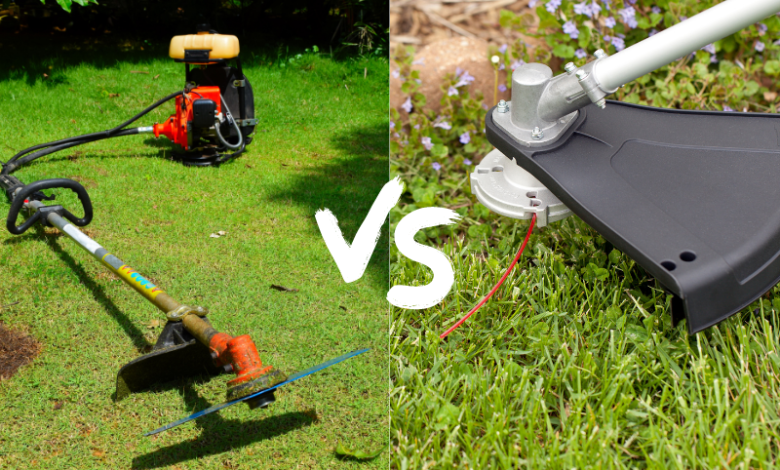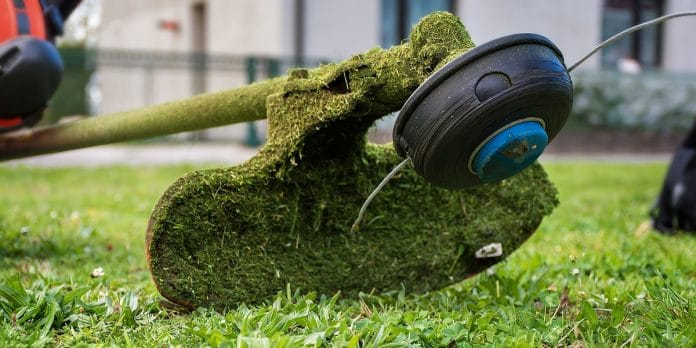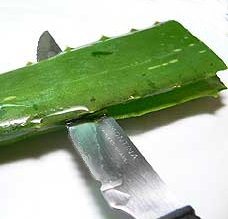Brushcutter: Should I use the line or the blade?

The brushcutter is one of the most used gardening tools by professionals and enthusiasts, as it is practical and efficient when it comes to cutting weeds, small bushes or simply accessing the edges and corners of the lawn, but it is important to know how to select the type of brushcutter. correct thread or blade for each need.
Although we have the best brushcutter , it is normal for us to have doubts about which accessory to use to achieve the best cut, since the idea is to do the job in the shortest possible time and with clean results, even if we are just gardening enthusiasts. In this sense, to know if the line or the blade is suitable, it is important to take into account the type of vegetation and the level of difficulty of the work to be carried out.
Nowadays, it is possible to find wires of different profiles, diameters and colors, as well as different types of blades or discs with a variety of sizes, shapes and number of teeth. The first thing that we must make clear is that there is no fixed rule on whether you should use a thread or a blade, but there are only recommendations from experts that can give us an idea. In this sense, we cannot say that the thread is better than the blade or vice versa.
What you should know about string heads
If you want to use the brush cutter with line, it is good that you know the different heads that exist, since this is important when placing the new line in the tool once it has been consumed. We could make an initial classification between the heads that carry the wound nylon line and those that work with the cut line.
When it comes to wound nylon, there are two types of heads; semi-automatic and manual. The first ones are the most practical and easy to use, since we only have to accelerate the machine and hit the base of the head against the ground, thus releasing a new section of thread. The advantage of this system is that we do not have to interrupt work at any time.
By contrast, manual wound nylon heads require a little more work to get the new line off the spool. In this case, it is necessary to turn off the tool and unlock the spool to remove the new thread, only then it is possible to turn on the machine to continue working. However, with practice this usually takes only a few minutes.
The heads that carry the cut thread are increasingly used at a professional and domestic level, this is because they are more robust and durable, in addition, they can be used with thicker thread that have a longer useful life and even allow to place two wires for each hole, thus increasing its cutting capacity for a long time without having to constantly change the wire. They are also compatible with the blade attachment system, making them more versatile.

How to choose the nylon line for the brushcutter?
Nylon line is generally used to cut grass and herbaceous weeds on terrain with obstacles, such as stones and trees. But it is also available in different types, so there are three fundamental variables that we must take into account when choosing the thread; thickness, shape and quantity.
The thickness of the line will depend on the type of head used, the power of the tool and the vegetation to be cut. The diameter can be from 1.3 to 4 mm, the thinnest is used for fine and tender grass, while tough weeds need a thicker thread. A machine of great power must also be used with a thread with a good thickness; on the other hand, a low power requires a fine thread. However, an intermediate thickness of 2.5 to 3 mm can be a good choice for any job.
Regarding the shape of the thread, the first thing to say is that there is not a big difference between the plain thread and the other variants, but the cut can be slightly improved if you use one or the other, therefore, it is good to know them. In this way, the different shapes of the thread are intended to add sharp edges, so there is the square, star, triangular, spiral or braided thread, among others.
On the other hand, the amount of thread is given in meters, since it is commonly presented in a coil or roll. To choose the quantity, you have to think about the durability and the use that you are going to give it, for example, a 90 m coil of 2.5 mm diameter thread can have the same price as a 30 m coil of large diameter thread. thickness with 4 mm. Although the medium thickness thread is used more frequently, the quantity in meters is more convenient, especially since it is a more versatile thread, since a very thick thread will only be used for certain specific cuts. It is worth mentioning that there are coils from 10 to 200 m of different diameters on the market.

Keys to choose the cutting disc for the brushcutter
The advantage of cutting discs or blades is that they allow you to do the hardest work, even cutting shrubs and roots of a certain hardness, however, it should be noted that these require more experience on the part of the user, especially on terrain with obstacles., since stones and other blunt objects can be thrown in any direction, which is less the case with nylon thread.
In this case, the number of teeth on the disc is important. The basic two-tine is used for fine grass, lawns, weeds and brambles. One of three or four teeth can cut non-woody vegetation as well as tough grass depending on the thickness of the blade. From 8 teeth, the blade can be useful for cutting cane, brush and small bushes, but there are also special blades with 40 and up to 80 teeth that cut thin trees without any difficulty. However, it is important to know that these discs are used in high-power brushcutters.




